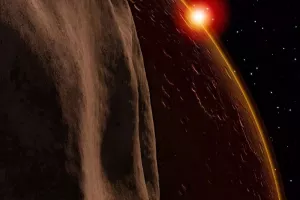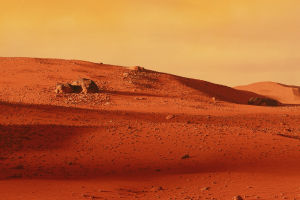We may not think about our planet on a day-to-day basis, but the world we live in is a pretty interesting place. The third rock from the sun—and to this day, the only one with known intelligent life—there are plenty of fun Earth facts that we all learned from a young age. Still, there are even more fascinating facts most of us don't know.
1. The days are getting longer
The length of Earth's day is increasing. When Earth was formed 4.6 billion years ago, its day would have been roughly six hours long. By 620 million years ago, this had increased to 21.9 hours. Today, the average day is 24 hours long, but is increasing by about 1.7 milliseconds every century. The reason? The moon is slowing down Earth's rotation through the tides that it helps create. Earth's spin causes the position of its tidal ocean bulges to be pulled slightly ahead of the moon-Earth axis, which creates a twisting force that slows down Earth's rotation. As a result, our day is getting longer — but not long enough to make a difference to your busy schedule.
2. Plate Tectonics Keep the Planet Comfortable
Earth is the only planet in the Solar System with plate tectonics. Basically, the outer crust of the Earth is broken up into regions known as tectonic plates. These are floating on top of the magma interior of the Earth and can move against one another. When two plates collide, one plate will subduct (go underneath another), and where they pull apart, they will allow fresh crust to form. This process is very important, and for a number of reasons. Not only does it lead to tectonic resurfacing and geological activity (i.e. earthquakes, volcanic eruptions, mountain-building, and oceanic trench formation), it is also intrinsic to the carbon cycle. When microscopic plants in the ocean die, they fall to the bottom of the ocean. Over long periods of time, the remnants of this life, rich in carbon, are carried back into the interior of the Earth and recycled. This pulls carbon out of the atmosphere, which makes sure we don’t suffer a runaway greenhouse effect, which is what happened on Venus. Without the action of plate tectonics, there would be no way to recycle this carbon, and the Earth would become an overheated, hellish place.
3. Earth is not a perfect sphere.
Yes, we've all been taught that the Earth is not flat, but it may shock you to learn that it's not perfectly spherical either. As the National Oceanic and Atmospheric Administration (NOAA) points out, Earth spins while gravity pushes toward the center and a centrifugal force, perpendicular to Earth's axis, pushes out. This results in a bit of a tilted shape—not a perfect sphere.
4. Earth's gravity isn't uniform
If Earth were a perfect sphere, its gravitational field would be the same everywhere. But in reality, the planet's surface is bumpy, and water flow, ice drift and the movement of the tectonic plates beneath Earth's crust all change the pull of gravity. These variations are known as gravity anomalies. A mountain range such as the Himalayas causes a positive gravity anomaly — gravity is stronger there than it would be on a featureless perfectly smooth planet. Conversely, the presence of ocean trenches, or dips in the land caused by glaciers millennia ago, leads to negative gravity anomalies. NASA's GRACE (Gravity Recovery and Climate Experiment) mission, orbiting above us, is mapping Earth's gravitational field in unprecedented detail.
5. 70% of the Earth’s Surface is Covered in Water
When astronauts first went into the space, they looked back at the Earth with human eyes for the first time. Based on their observations, the Earth acquired the nickname the “Blue Planet:. And it’s no surprise, seeing as how 70% of our planet is covered with oceans. The remaining 30% is the solid crust that is located above sea level, hence why it is called the “continental crust”.


